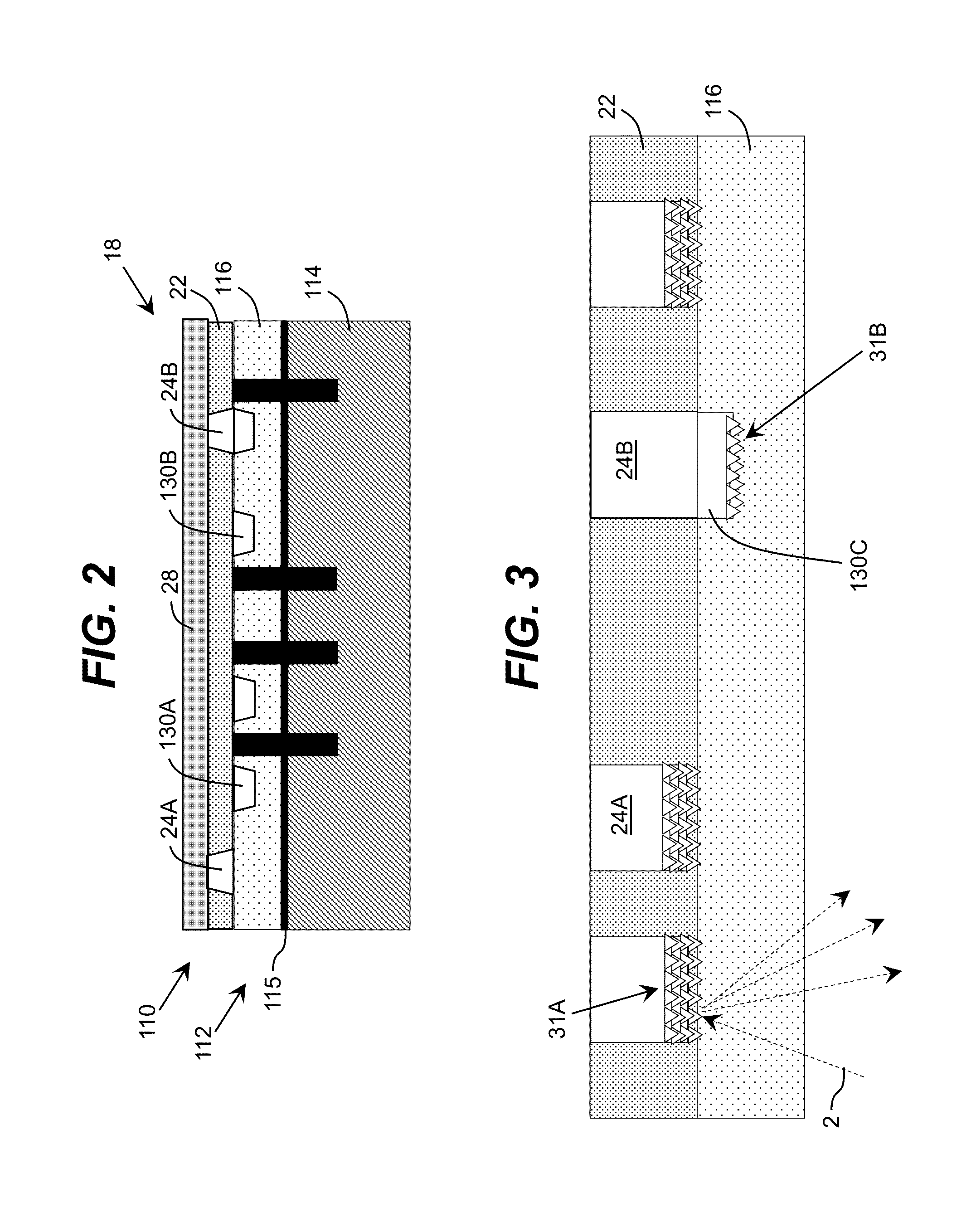Metallic contact for optoelectronic semiconductor device
a semiconductor device and contact technology, applied in the field of metal contacts, can solve the problems of high reflectivity or transparency, difficult formation of p-type ohmic contacts, low specific resistance, etc., and achieve the effect of increasing the overall reflectivity or transparency of contacts
- Summary
- Abstract
- Description
- Claims
- Application Information
AI Technical Summary
Benefits of technology
Problems solved by technology
Method used
Image
Examples
Embodiment Construction
[0041]As indicated above, aspects of the invention provide a metallic contact to a semiconductor layer in a light emitting structure. The contact can include a plurality of contact areas formed of a metal and separated by a set of voids. The contact areas can be separated from one another by a characteristic distance selected based on a set of attributes of a semiconductor contact structure of the contact and a characteristic contact length scale of the contact. The voids can be configured to increase an overall reflectivity or transparency of the contact. A metallic contact described herein can have a reduced Schottky barrier such that the nonlinear contact behavior can be ignored, which is referred to as an “ohmic contact” herein. As used herein, unless otherwise noted, the term “set” means one or more (i.e., at least one) and the phrase “any solution” means any now known or later developed solution.
[0042]Turning to the drawings, FIGS. 1A and 1B show top and lateral views, respect...
PUM
 Login to View More
Login to View More Abstract
Description
Claims
Application Information
 Login to View More
Login to View More - R&D
- Intellectual Property
- Life Sciences
- Materials
- Tech Scout
- Unparalleled Data Quality
- Higher Quality Content
- 60% Fewer Hallucinations
Browse by: Latest US Patents, China's latest patents, Technical Efficacy Thesaurus, Application Domain, Technology Topic, Popular Technical Reports.
© 2025 PatSnap. All rights reserved.Legal|Privacy policy|Modern Slavery Act Transparency Statement|Sitemap|About US| Contact US: help@patsnap.com



